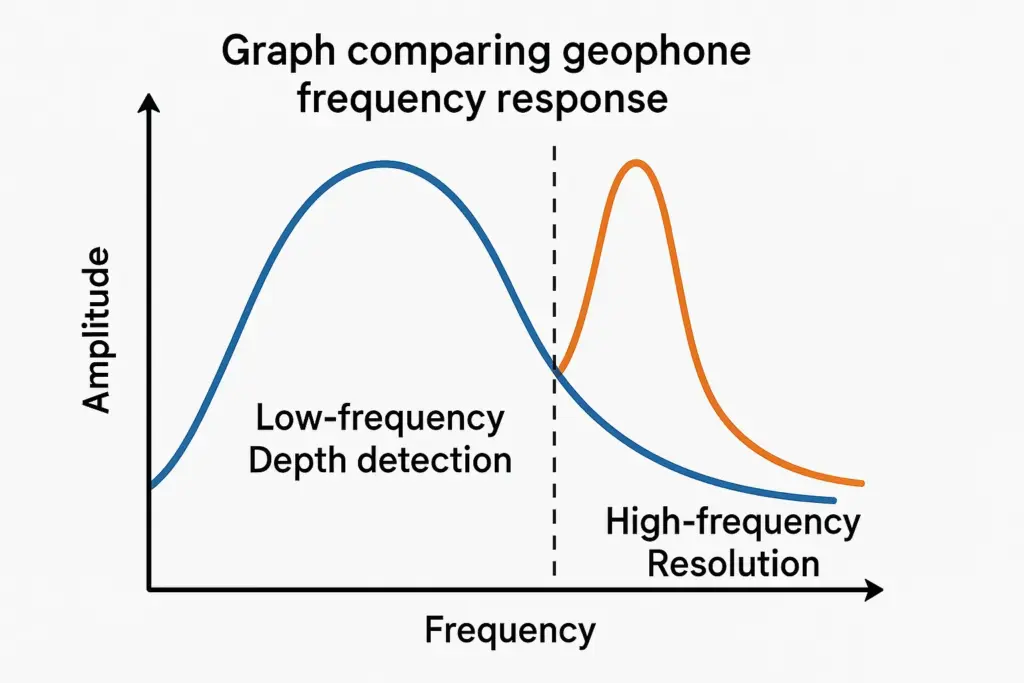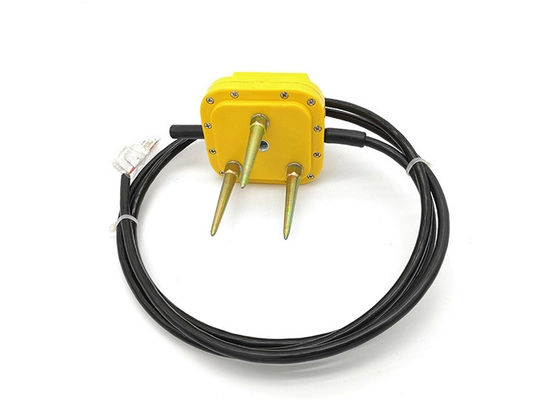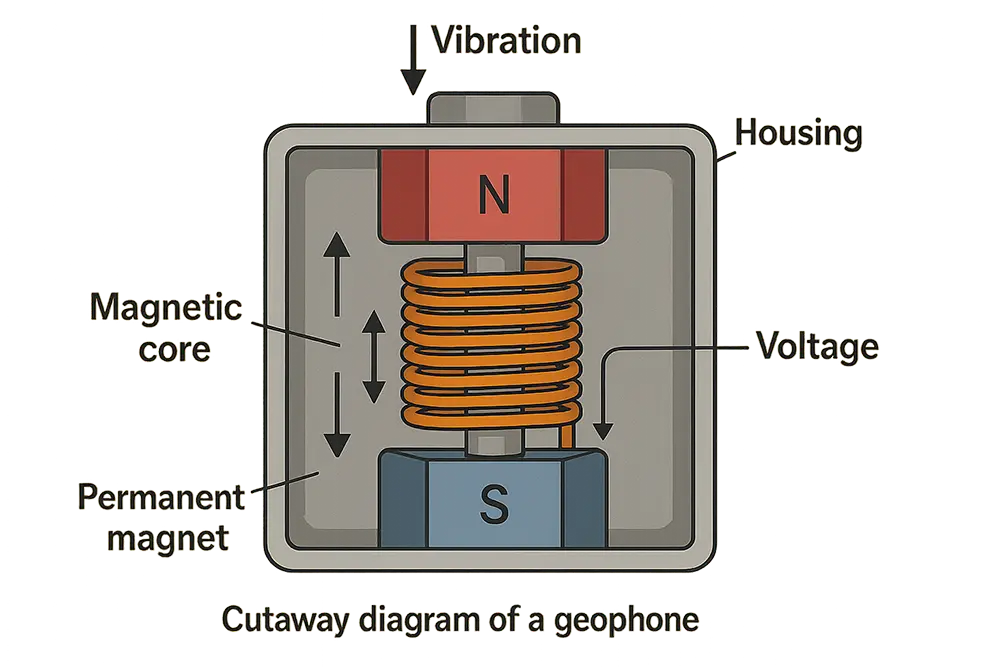A geophone is a highly sensitive ground motion transducer that converts ground vibrations into electrical signals. The core components include:
- Magnetic Core & Coil – An electric coil surrounds a suspended magnetic core.
- Permanent Magnet – A case-mounted magnet creates the magnetic field.
- Electromagnetic Induction – When the ground moves, the housing moves with it while the coil tends to remain stationary. The relative motion between the coil and magnet induces a voltage, proportional to vibration velocity.
This induced signal is called the seismic response, which seismologists and geophysicists analyze to study subsurface structures.
Frequency Characteristics of Geophones
- Natural Frequency – The frequency at which the geophone naturally oscillates (commonly ~10 Hz).
- Spurious Frequency – An upper limit beyond which the geophone cannot reliably measure (commonly ~250 Hz).
Geophones can only monitor frequencies above their natural frequency. For example:
- Surface wave studies → require low-frequency geophones (<5 Hz).
- Refraction surveys → typically use 10–28 Hz geophones.
- Reflection surveys → often use 10–40 Hz geophones.
👉 Trade-off: Low-frequency geophones capture deeper signals but with less resolution, while high-frequency geophones capture more detail but at shallower depths.

Types of Geophones
Vertical Geophones
- Best for refraction and surface wave studies.
- Sensitive to vertical ground motion.
Horizontal Geophones
- Preferred for near-surface reflection surveys.
- Advantages:
- Reduce refracted wave interference
- Measure shear wave velocities for better resolution
Multi-Component (3C) Geophones
- Contain three sensors: one vertical, two horizontal (90° apart).
- Capture full 3D ground motion.
- Common in HVSR (Horizontal-to-Vertical Spectral Ratio) and advanced monitoring projects.
Omnidirectional Geophones
- Function regardless of orientation.
- Useful in environments where sensor alignment is challenging.
Geophone Magnet Selection
Permanent magnets are critical for geophone performance, directly influencing sensitivity, stability, and accuracy. Common magnet types include:
| Magnet Type | Advantages | Limitations | Use in Geophones |
|---|---|---|---|
| AlNiCo | High accuracy, thermal stability, cost-effective | Lower maximum energy product | Still regarded as the most suitable due to stability and precision |
| Samarium Cobalt (SmCo) | High temperature resistance, corrosion-resistant | More expensive | Used in specialized geophones |
| Neodymium (NdFeB) | Very strong magnetic field, compact design | Susceptible to corrosion, less stable in high temperatures | Sometimes used but not ideal for long-term accuracy |
👉 Despite advances in rare earth magnets, AlNiCo remains the preferred choice because of its excellent accuracy, stability, and cost-effectiveness for seismic applications.

Key Takeaways
- Geophones rely on electromagnetic induction between coils and permanent magnets.
- Frequency selection depends on survey type: low-frequency for deep investigations, higher-frequency for resolution.
- Different geophone orientations (vertical, horizontal, 3C, omnidirectional) serve specialized purposes.
- While NdFeB and SmCo offer advantages, AlNiCo magnets are still the gold standard for geophones.


Leave a Reply